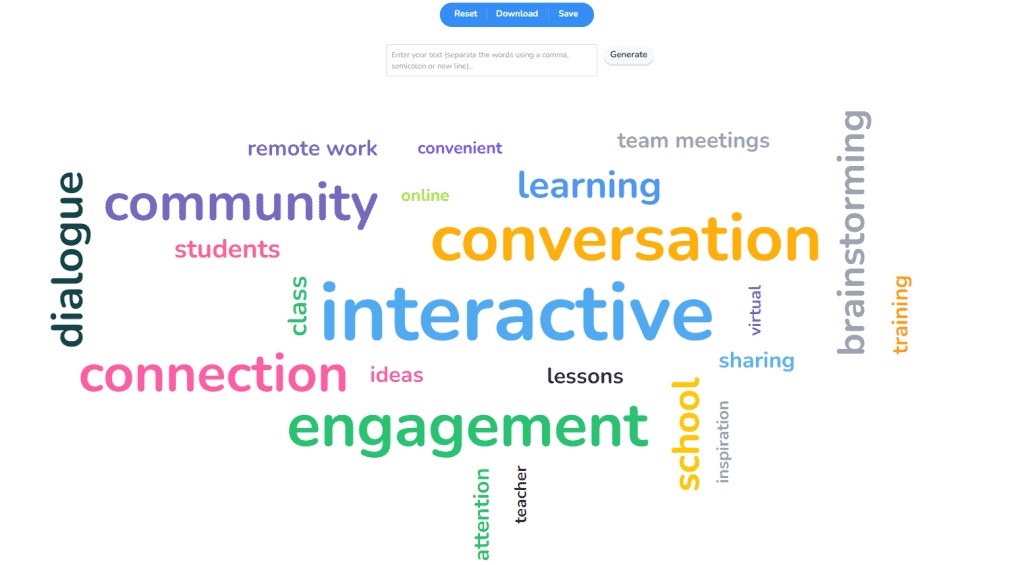You’re standing in front of your class, delivering what you believe is an engaging presentation, only to see glazed eyes and suppressed yawns. We’ve all been there. As educators, we understand that keeping students engaged during presentations can feel like trying to catch lightning in a bottle. That’s where presentation games for students come in – they’re not just add-ons, but powerful tools that transform passive listeners into active participants.
Table of Contents
Why Use Presentation Games?
Research consistently shows that presentation games for students significantly improve learning outcomes. A 2023 study in the Journal of Educational Psychology found that interactive learning activities increase information retention by up to 75% compared to traditional lecture formats. Think of presentation games for students as mental workout sessions – just as physical exercise strengthens muscles, interactive learning strengthens neural connections.
Let’s dive into the proven benefits:
- Active engagement triggers the brain’s reward system
- Peer interaction reinforces learning through social connections
- Immediate feedback loops enhance knowledge retention
- Competitive elements boost motivation and focus
15+ Interactive Presentation Games for Students
1. Quiz Race
How to Play:
- Create multiple-choice questions in AhaSlides
- Split class into teams
- Teams race to answer questions correctly
- Show live leaderboard after each question
- First team to reach target points wins
2. Word Cloud Battle
How to Play:
- Show a topic or concept
- Students submit related words through their phones
- Words appear in real-time, bigger = more common answers
- Discuss the most popular responses
- Award points for unique, relevant answers

3. Presentation Bingo
How to Play:
- Create bingo cards with key terms from the lesson
- Students mark off terms as they appear in presentations
- Use AhaSlides to track progress
- First to complete a row calls “Bingo!”
- Must explain each marked term to win
4. Chain Story
How to Play:
- Start a story related to the lesson topic
- Each student adds one sentence
- Display growing story on AhaSlides
- Must include lesson vocabulary
- Vote on most creative continuation
5. Fact or Fiction
How to Play:
- Students create three statements about the topic
- One statement must be false
- Class votes through AhaSlides
- Points for fooling others and spotting lies
- Explain why false statements aren’t true
6. Picture Perfect
How to Play:
- Show an image related to the lesson
- Students write observations or predictions
- Submit answers through AhaSlides
- Compare different interpretations
- Reveal correct context or explanation
7. Hot Seat
How to Play:
- One student sits in the “hot seat”
- Others submit questions through AhaSlides
- Student must answer within 30 seconds
- Points for good questions and answers
- Switch after 5 questions
8. Category Sprint
How to Play:
- Display a category from the lesson
- Students list as many related items as possible
- Set 60-second timer
- Submit lists through AhaSlides
- Compare answers, unique items get bonus points
9. Memory Chain
How to Play:
- First student states one fact
- Next student repeats fact and adds another
- Continue building chain
- Use AhaSlides to track the sequence
- Last person who can repeat all facts wins
10. Puzzle Pieces
How to Play:
- Break lesson content into “puzzle pieces”
- Teams arrange pieces in correct order
- Submit sequence through AhaSlides
- Fastest correct arrangement wins
- Teams explain their reasoning
11. Silent Line-Up
How to Play:
- Give each student a number or date related to topic
- Without speaking, line up in correct order
- Use AhaSlides to verify sequence
- Must explain their position’s significance
- Time challenge adds excitement
12. Emoji Stories
How to Play:
- Tell a story or explain concept using only emojis
- Submit through AhaSlides
- Others guess what story means
- Points for clarity and creativity
- Reveal actual story/concept
13. Definition Detective
How to Play:
- Display key term from lesson
- Students write definitions in their own words
- Mix in actual definition
- Vote on which is correct
- Points for fooling others with good fake definitions
14. Rapid Review Relay
How to Play:
- Form teams
- Each team member answers different question
- Must complete all questions in time limit
- Use AhaSlides timer and scoring
- Fastest team with all correct answers wins
15. Concept Connection
How to Play:
- Display two seemingly unrelated concepts
- Students find connections between them
- Submit ideas through AhaSlides
- Vote on most creative/accurate connections
- Explain thinking behind connections
Going Digital: Using Tech in Your Games
Modern presentation games for students leverage technology to enhance engagement. Here’s how:
Using Free Tools
- AhaSlides: Real-time polling and word clouds
- PowerPoint: Design branching scenarios
- Kahoot!: Quick knowledge checks with competitive elements
Advanced Platforms Transform presentation games for students with specialized tools:
- Nearpod: Immersive lesson delivery with built-in assessment
- Quizizz: Gamified quizzes with meme rewards
- AhaSlides: Real-time polling and word clouds
4+ Tips for Virtual Success
When implementing presentation games for students online:
- Keep technical requirements simple
- Use breakout rooms for small group activities
- Incorporate regular screen breaks
- Provide clear written instructions in chat
How to Run Your Games Smoothly
Successful presentation games for students require thoughtful planning:
For Different Age Groups:
- Elementary: Focus on movement and simple rules
- Middle School: Add competitive elements
- High School: Incorporate critical thinking challenges
For Various Class Sizes:
- Small Groups (under 15): Individual participation
- Medium Groups (15-30): Pair activities
- Large Groups (30+): Team-based approaches

Checking How Well It Worked (2 Steps)
Transform presentation games for students into valuable assessment tools:
Measuring Success:
- Track participation rates
- Monitor response accuracy
- Observe peer interactions
- Collect student feedback
Effective Debriefing:
- What did we learn?
- How did the game help?
- What could be improved?
- How can we apply these concepts?
12+ Games for Different School Subjects
Adapt presentation games for students across disciplines:
Science:
- Molecule Building Challenges
- Ecosystem Connection Games
- Lab Safety Simulations
Mathematics:
- Number Pattern Races
- Geometry Shape Hunts
- Problem-Solving Relays
Language Arts:
- Character Development Charades
- Plot Structure Puzzles
- Grammar Gladiators
Social Studies:
- Historical Timeline Games
- Geography Quests
- Cultural Connection Activities

Technology Tips and Troubleshooting
Make presentation games for students technically smooth:
- Test all digital tools beforehand
- Have backup activities ready
- Prepare clear technical instructions
- Create user guides for new platforms
Best Practices for Implementation
To maximize the impact of presentation games for students:
- Start Simple
- Begin with basic games
- Gradually increase complexity
- Build on successful elements
- Maintain Engagement
- Keep rounds short
- Vary game types
- Include all learning styles
- Foster Collaboration
- Mix skill levels
- Rotate team leaders
- Encourage peer teaching
Conclusion
Presentation games for students aren’t just about making learning fun – they’re about creating meaningful connections with content. By incorporating these interactive elements into your presentations, you’re not just teaching; you’re creating memorable learning experiences that stick.
Remember: The best presentation games for students are those that align with your teaching style and your students’ needs. Start with one or two games, perfect them, then expand your repertoire. Your students’ enhanced engagement and improved learning outcomes will make the effort worthwhile.
Head to Indoor Games for Groups for more engaging ideas!